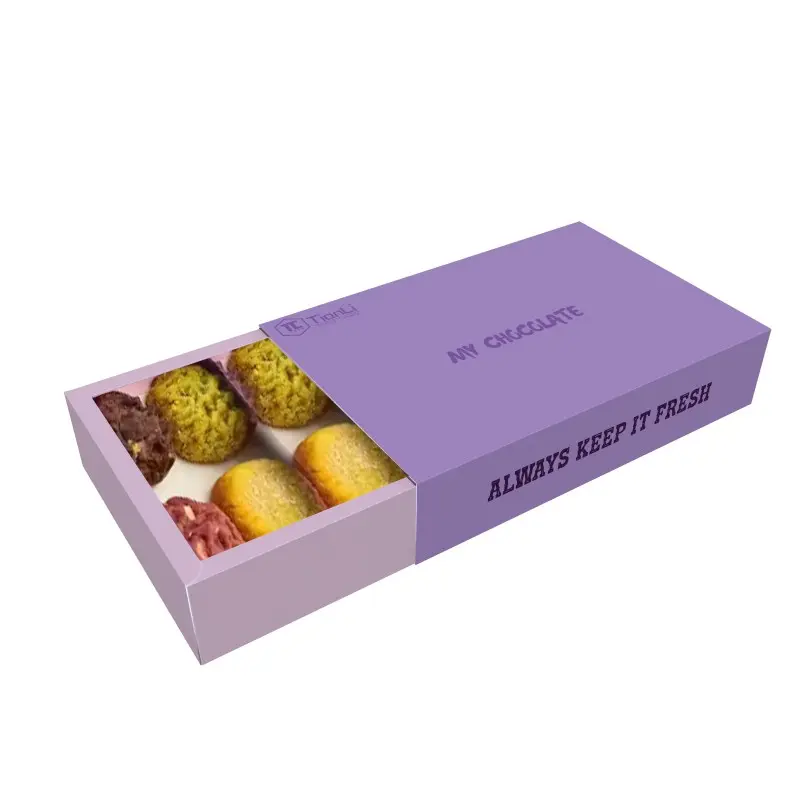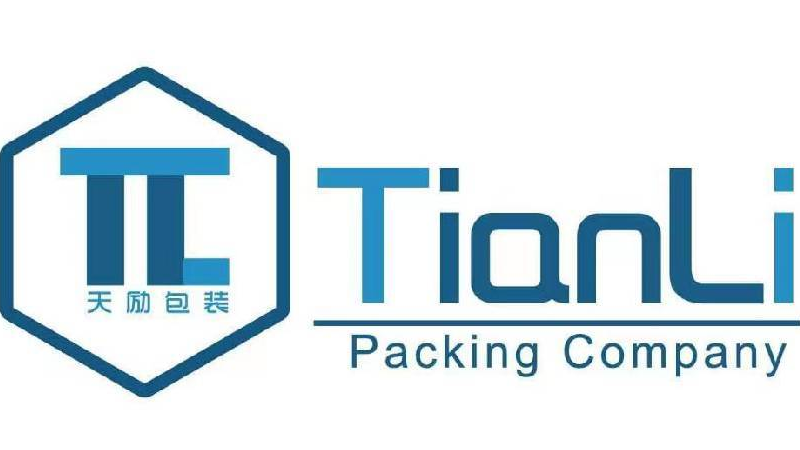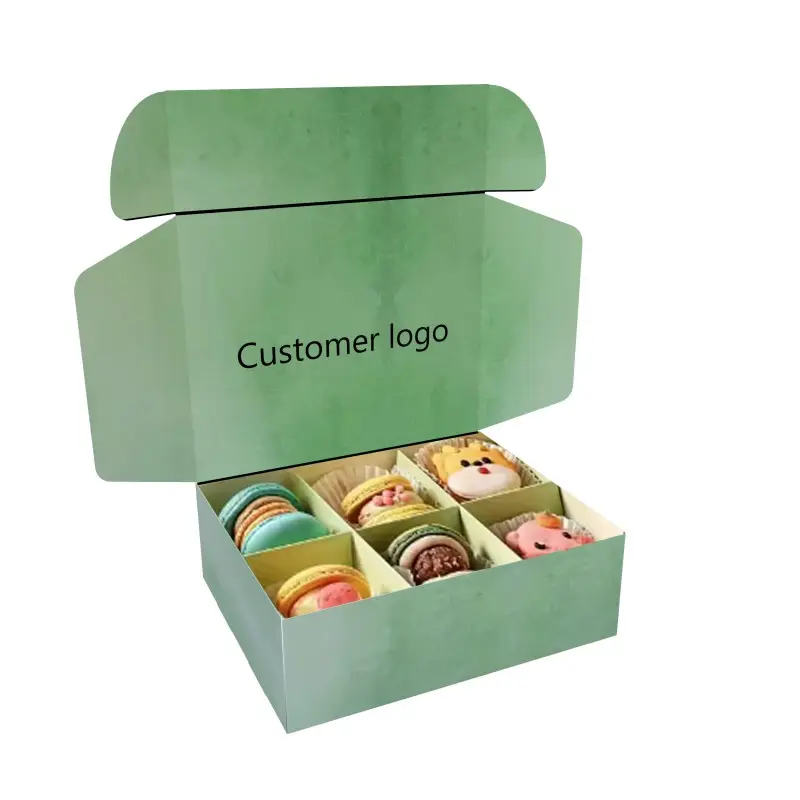Selecting the Right Food Box Manufacturing Partner
Evaluating Expertise in Food-Grade Materials
Picking the right manufacturer for food boxes starts with looking at how familiar they are with food grade materials. What really matters isn't just knowing the difference between paper, plastic, and those biodegradable alternatives, but understanding which works best under real world conditions. Someone who's worked extensively with these materials knows exactly what goes into meeting FDA requirements and other food safety standards that keep products protected during transport and storage. Want proof? Ask to see actual case studies or talk to previous customers who've dealt with similar challenges in their packaging needs. Real world feedback tells volumes about whether a company can handle specific requests without compromising on safety standards that protect both consumers and brand reputation alike.
Assessing Sustainability Commitments
When picking a manufacturing partner, looking at their green credentials matters a lot. Take a good look at what happens behind the scenes in their supply chains first. How do they actually get those sustainable materials? What steps are they taking to cut down on emissions? Certifications matter too FSC labels or ISO 14001 status show real effort toward environmentally friendly packaging. Don't forget to check out where they're headed long term with sustainability. Are their future plans matching up with what your business stands for when it comes to protecting the planet? A partnership built on shared environmental values doesn't just feel right ethically it actually helps both sides work together better toward cutting overall carbon emissions over time.
Reviewing Certifications (e.g., FDA, BRC)
Getting the right certifications is really important when it comes to following food safety rules, so businesses need to check what kind of certifications are required for their packaging materials. The main ones to look out for are FDA approvals and BRC certifications from the British Retail Consortium. These aren't just paperwork exercises they actually show that a company meets certain quality standards across different markets. When shopping around for suppliers, make sure to ask for copies of all their certification documents and take time to go through them carefully. This helps confirm whether the manufacturer is legitimate or not. Beyond just keeping things safe, having proper certifications builds confidence with customers who want assurance that what they're buying isn't going to cause any health problems down the line. Stakeholders will appreciate seeing these credentials too since they demonstrate responsibility throughout the supply chain.
Effective Communication Strategies
Specifying Design Requirements Upfront
Starting a packaging project? Get those design specs sorted out from day one. Know exactly what size things need to be, which colors look best together, and where all the brand logos should go. This basic info stops everyone involved from talking past each other later on. A good sketch or sample image really helps too when explaining ideas to others who might not share the same vision. Speaking of which, don't wait until problems pop up during manufacturing before mentioning them. Talk about possible issues upfront with suppliers and manufacturers. We've seen way too many projects hit roadblocks simply because someone assumed something would work but nobody actually checked if it could.
Aligning on Material Preferences and Limitations
Talking about what materials we want from the get-go makes all the difference when working with our packaging supplier. If someone wants something eco friendly like recycled cardboard or compostable plastics, spelling this out clearly helps make sure whatever gets made actually works for the product itself. Don't forget to mention any downsides too - some green alternatives just don't hold up as well over time or during shipping. Getting everyone straight on what's available right now matters a lot too since delays happen constantly in manufacturing. Supply chains are tricky beasts these days, so knowing ahead of time if there will be problems saves headaches later down the road.
Setting Clear Expectations for Food Safety Standards
When creating packaging for food items, setting clear guidelines around safety standards becomes really important. The packaging needs to follow certain requirements to stay within legal boundaries. Looking at how well manufacturers stick to these rules matters too. Their track record with quality checks tells us whether they can consistently produce safe products. Checking back on these safety parameters during actual production isn't just good practice it's practically necessary for keeping things running smoothly. Most companies find that regular reviews help catch potential issues before they become real problems.
Navigating Production and Quality Control
Importance of Prototyping and Sampling
Prototyping plays a really important role in production since it gives us a chance to check out different materials and see if our design decisions work before going all in on mass manufacturing. When we build prototypes, we get to see which materials actually perform as expected and spot any changes needed to make things work better. For making sure the finished product hits those quality marks and stays safe, I run pretty thorough tests while samples are being made. We put prototypes through their paces under lots of different scenarios that look a lot like what they'll face in actual use. Getting feedback from all these tests makes a big difference too. It tells us where to tweak and fix problems so we end up with something that ticks all the boxes for what we need.
Implementing Quality Assurance Protocols
Good quality control measures matter a lot when it comes to keeping things running smoothly during manufacturing. Our suppliers know this well because sticking to strict guidelines means every batch coming off the line looks and works exactly the same way. We do regular checks and walk throughs at different stages just to make sure everything meets those standards we've set. These routine visits catch problems before they become big headaches later on and give us actual numbers to work with when making improvements. Bringing in tech solutions like automatic inspection systems really helps speed things up while getting better results too. Machines don't get tired or distracted so they spot flaws faster than people ever could. Plus, all this automation saves time overall without compromising how good the final products actually are.
Monitoring Production Timelines
Creating a solid production schedule with clearly marked checkpoints makes all the difference when managing projects and keeping things on time. When these markers are set properly, it becomes much easier to keep tabs on where things stand and spot problems before they get out of hand. Looking ahead at possible setbacks matters too. Having contingency plans ready gives teams a fighting chance against surprises down the road. Weekly meetings with the production crew help everyone stay in sync about what's working and what needs fixing while keeping eyes on those deadlines. And don't forget about partner relationships either. Keeping lines of communication open between departments allows quick fixes when obstacles pop up, something we learned the hard way during last quarter's product launch.
Managing Logistics and Order Requirements
Negotiating Minimum Order Quantities (MOQs)
When it comes to food packaging, minimum order quantities or MOQs matter a lot because they impact what companies pay per unit and how they plan their orders. Generally speaking, ordering larger quantities tends to bring down the cost per item thanks to bulk discounts, which affects how retailers set their prices. But here's the thing some suppliers actually allow room for negotiation on these MOQ requirements depending on what makes sense for different businesses. Small bakeries or specialty shops often need smaller batches than big chains do after all. Adjusting MOQs helps companies keep their stock levels right where they should be without overbuying. This becomes especially important during holiday seasons when demand spikes or when unexpected events disrupt normal supply patterns in the market.
Optimizing Packaging for Shipping Efficiency
Getting better at shipping really comes down to picking the right packaging designs that keep products safe but also make good use of space and cut down on costs. Take collapsible boxes for instance they actually let companies pack more stuff into trucks and planes because they take up less room when empty. And let's not forget about those green packaging options like recycled cardboard or biodegradable plastics that help meet sustainability targets without putting products at risk. For manufacturers trying to shrink their carbon footprint these days, finding this balance between protection, cost savings, and environmental responsibility has become absolutely essential in staying competitive within today's market demands.
Establishing Contingency Plans
Good contingency planning makes all the difference when dealing with those pesky logistics problems we all know too well, like shipping delays from bad weather or unexpected supply chain hiccups. Keeping everyone in the loop through solid communication channels really helps cut down on chaos when things go sideways. Take a look at companies that actually pulled off their operations despite major setbacks thanks to smart backup plans. For instance, some manufacturers kept production going during pandemic shortages simply because they had alternative suppliers lined up ahead of time. The bottom line? Businesses need to stay flexible and ready to pivot when faced with logistical nightmares if they want to keep operations running smoothly and maintain happy customers who expect timely service no matter what happens outside their four walls.

Building Long-Term Collaborative Relationships
Maintaining Transparent Communication Channels
Clear communication remains essential for establishing trust and resolving problems before they escalate. When teams keep talking openly, they work better together and tackle issues much faster than when everyone keeps things to themselves. Modern tech tools let companies send instant updates and collect customer input without hassle, so everyone stays on the same page regarding what needs doing next. Companies that share their objectives and roadblocks honestly tend to create environments where people actually collaborate instead of just going through the motions. This kind of openness builds real relationships between partners that last well beyond initial contracts.
Providing Constructive Feedback Loops
Having some sort of organized way to give feedback really helps push things forward and keeps everyone working together better. When companies set up these feedback systems, people on both ends can share what's going well and where there might be room for improvement. We've seen this work in practice too many times to count. Take manufacturing for example, when workers get to talk openly about how equipment performs day to day, it often leads to real improvements in what gets produced. The whole point is creating space where anyone involved feels comfortable sharing ideas. This kind of open communication doesn't just make operations run smoother, it actually sparks new ideas that nobody would have thought of otherwise. Most successful businesses know this now, they build feedback mechanisms right into their daily routines because it pays off in so many ways.
Aligning on Continuous Improvement Goals
When companies set common goals for getting better together, they usually see improvements in product quality as well as how efficiently operations run. Looking at performance numbers regularly helps track where everyone stands regarding these joint targets, making sure all involved stay on the same page about what needs doing next. Innovation happens when teams adapt their approaches after checking those performance stats against what's happening across the industry right now. This keeps businesses ahead of the curve instead of falling behind market changes. Getting everyone focused on ongoing improvements builds stronger working relationships too, which tends to create partnerships that last longer and deliver real results over time.
FAQ
What factors should I consider when selecting a food box manufacturing partner?
Consider factors such as expertise in food-grade materials, sustainability commitments, and industry certifications like FDA and BRC.
Why are sustainability commitments important in choosing a manufacturing partner?
Sustainability commitments ensure that the partner's practices align with your environmental goals, reducing carbon footprints and using sustainable materials.
How can communication with a packaging partner be optimized?
Optimize communication by specifying design requirements upfront, aligning on material preferences, and setting clear expectations for food safety standards.
What role does prototyping play in the packaging production process?
Prototyping allows for testing material selections and design choices, ensuring quality and identifying modifications before full-scale manufacturing.
How can companies manage logistics challenges effectively?
By negotiating flexible minimum order quantities, optimizing packaging for shipping efficiency, and establishing contingency plans to address potential disruptions.
Table of Contents
- Effective Communication Strategies
- Navigating Production and Quality Control
- Managing Logistics and Order Requirements
- Building Long-Term Collaborative Relationships
-
FAQ
- What factors should I consider when selecting a food box manufacturing partner?
- Why are sustainability commitments important in choosing a manufacturing partner?
- How can communication with a packaging partner be optimized?
- What role does prototyping play in the packaging production process?
- How can companies manage logistics challenges effectively?

